 No probe has ever gone to Pluto, but New Horizons aims to change that. The craft, launched in 2006, is set to arrive at the solar system's tiny former planet in June 2015. The image here depicts New Horizons sailing past Jupiter.
No probe has ever gone to Pluto, but New Horizons aims to change that. The craft, launched in 2006, is set to arrive at the solar system's tiny former planet in June 2015. The image here depicts New Horizons sailing past Jupiter.  Dawn is designed to orbit the protoplanet Vesta and the dwarf planet Ceres -- the two most massive bodies in the main asteroid belt between Mars and Jupiter. The mission will provide scientists with new knowledge of how the solar system formed and evolved. Launched in 2007, Dawn arrived at Ceres early this year.
Dawn is designed to orbit the protoplanet Vesta and the dwarf planet Ceres -- the two most massive bodies in the main asteroid belt between Mars and Jupiter. The mission will provide scientists with new knowledge of how the solar system formed and evolved. Launched in 2007, Dawn arrived at Ceres early this year. 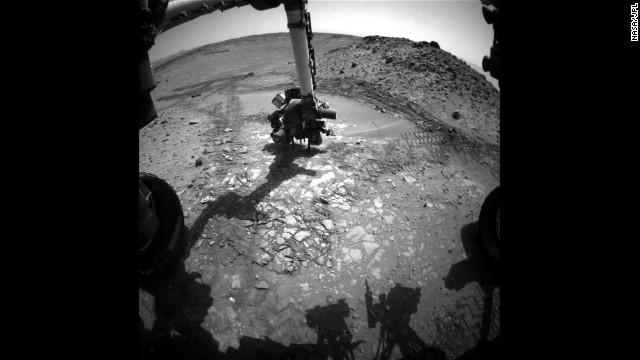 This image shows the Curiosity Mars rover doing a test drill on a rock dubbed "Bonanza King" to see if it would be a good place to dig deeper and to take a sample. Curiosity is the most advanced rover ever built, and is seeking to see if Mars is, or ever was, habitable for life forms.
This image shows the Curiosity Mars rover doing a test drill on a rock dubbed "Bonanza King" to see if it would be a good place to dig deeper and to take a sample. Curiosity is the most advanced rover ever built, and is seeking to see if Mars is, or ever was, habitable for life forms.  This image was taken on March 10, 2013, by NASA's Cassini spacecraft. Launched in 1997, the probe is orbiting Saturn and its numerous moons. Cassini has provided new understanding, not to mention breathtaking photos, of that corner of the solar system.
This image was taken on March 10, 2013, by NASA's Cassini spacecraft. Launched in 1997, the probe is orbiting Saturn and its numerous moons. Cassini has provided new understanding, not to mention breathtaking photos, of that corner of the solar system. 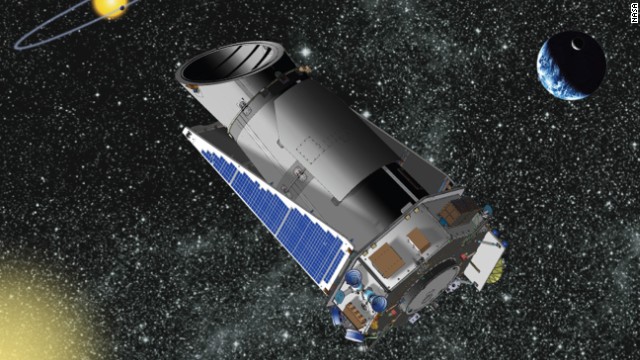 The Kepler space observatory is the first NASA mission capable of finding Earth-size planets in or near the habitable zones of stars. Launched in 2009, Kepler has been detecting planets and planet candidates with a wide range of sizes and orbital distances. Yes, we are finding new planets.
The Kepler space observatory is the first NASA mission capable of finding Earth-size planets in or near the habitable zones of stars. Launched in 2009, Kepler has been detecting planets and planet candidates with a wide range of sizes and orbital distances. Yes, we are finding new planets. 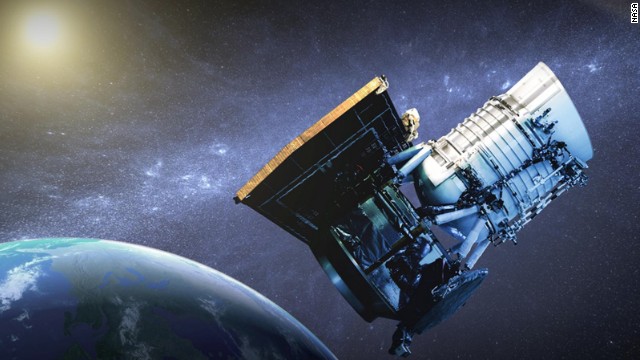 NEOWISE may be making us safer. The mission uses a space telescope to hunt for asteroids and comets, including those that could pose a threat to Earth. During its planned three-year survey -- through 2016 -- NEOWISE will rapidly identify and characterize near-Earth objects, gathering data on their size and other measurements.
NEOWISE may be making us safer. The mission uses a space telescope to hunt for asteroids and comets, including those that could pose a threat to Earth. During its planned three-year survey -- through 2016 -- NEOWISE will rapidly identify and characterize near-Earth objects, gathering data on their size and other measurements.  An artist's rendering of the Deep Impact flyby spacecraft releasing its impactor, 24 hours before the impact event, in July 2005. Pictured from left to right are comet Tempel 1, the impactor and the flyby spacecraft. The impactor was a 370-kilogram mass with an onboard guidance system. The flyby spacecraft included a solar panel, a high-gain antenna, a debris shield and instruments for high- and medium-resolution imaging, infrared spectroscopy and optical navigation (yellow box and cylinder, lower left).
An artist's rendering of the Deep Impact flyby spacecraft releasing its impactor, 24 hours before the impact event, in July 2005. Pictured from left to right are comet Tempel 1, the impactor and the flyby spacecraft. The impactor was a 370-kilogram mass with an onboard guidance system. The flyby spacecraft included a solar panel, a high-gain antenna, a debris shield and instruments for high- and medium-resolution imaging, infrared spectroscopy and optical navigation (yellow box and cylinder, lower left). 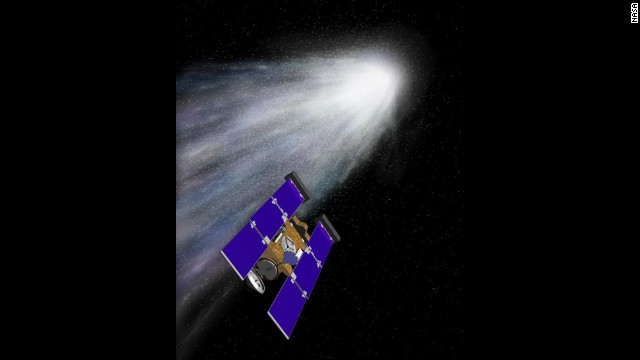 The Stardust spacecraft, shown in an artist's rendering, was launched on February 7, 1999, from Cape Canaveral, Florida, aboard a Delta II rocket. The primary goal of Stardust was to collect dust and carbon-based samples during its closest encounter with Comet Wild 2 (pronounced "Vilt 2," named after its Swiss discoverer).
The Stardust spacecraft, shown in an artist's rendering, was launched on February 7, 1999, from Cape Canaveral, Florida, aboard a Delta II rocket. The primary goal of Stardust was to collect dust and carbon-based samples during its closest encounter with Comet Wild 2 (pronounced "Vilt 2," named after its Swiss discoverer).  The Surveyor series of missions was the first U.S. effort to make a soft landing on the Moon. The missions tested the high-energy Atlas/Centaur rocket and new spacecraft design; two-way communications to control spacecraft activities from the ground; and a groundbreaking, elegant landing method, with three steerable rocket engines controlled by onboard radar.
The Surveyor series of missions was the first U.S. effort to make a soft landing on the Moon. The missions tested the high-energy Atlas/Centaur rocket and new spacecraft design; two-way communications to control spacecraft activities from the ground; and a groundbreaking, elegant landing method, with three steerable rocket engines controlled by onboard radar. 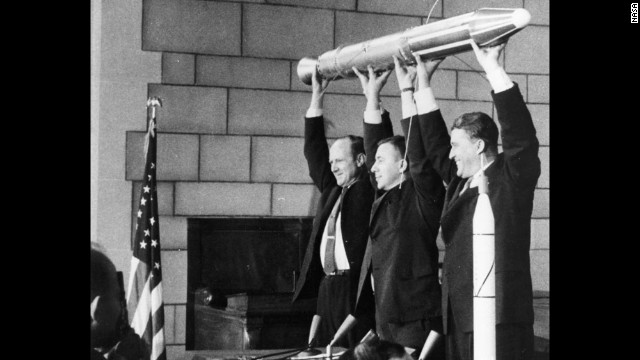 A model of Explorer 1, held by JPL's Director William Pickering, scientist James Van Allen and rocket pioneer Wernher von Braun (from left to right). The team was gathered at a news conference at the National Academy of Sciences in Washington to announce the satellite's successful launch. America's first satellite had been launched a few hours before, on January 31, 1958.
A model of Explorer 1, held by JPL's Director William Pickering, scientist James Van Allen and rocket pioneer Wernher von Braun (from left to right). The team was gathered at a news conference at the National Academy of Sciences in Washington to announce the satellite's successful launch. America's first satellite had been launched a few hours before, on January 31, 1958.  Of all the NASA missions, none has visited as many planets, rings and moons as the twin Voyager 1 and Voyager 2 spacecraft, which were launched in 1977. Voyager 1, now more than twice as distant as Pluto, is farther from Earth than any other object made by humans.
Of all the NASA missions, none has visited as many planets, rings and moons as the twin Voyager 1 and Voyager 2 spacecraft, which were launched in 1977. Voyager 1, now more than twice as distant as Pluto, is farther from Earth than any other object made by humans.
- Space probe Philae touched down on a comet on Wednesday
- It's the first time a probe has occupied a comet
- Other interesting space missions also happening
(CNN) -- It's hard to top the tricky, first-ever landing on a comet, broadcast live on the Internet.
That's what space lovers and other curious types got on Wednesday, when the European Space Agency's probe Philae touched down on Comet 67P.
It was high drama that continued into the afternoon as questions arose about whether the probe, in fact, stuck the landing despite the fact that harpoons designed to anchor it failed to fire. Then the probe's batteries appeared to conk out.
Many in the United States bemoaned the fact that it was a European agency, not an American one, that led the mission (although NASA was part of a consortium of partners for the mission).
Actually, NASA has done something very similar. The space agency made an impromptu landing on an asteroid called Eros on February 12, 2001.
The agency's Near Earth Asteroid Rendezvous-Shoemaker (NEAR-Shoemaker), the first mission to orbit an asteroid, wasn't designed to land, but when the mission ended, NASA decided to give it a try. It worked. The probe continued to send back data for several days and made its last call back to Earth on Feb. 28, 2001.
There are dozens of other exciting unmanned missions underway -- and several really cool ones that have wrapped up. Take a look at the gallery above, which highlights 11 fascinating space missions.
No comments:
Post a Comment